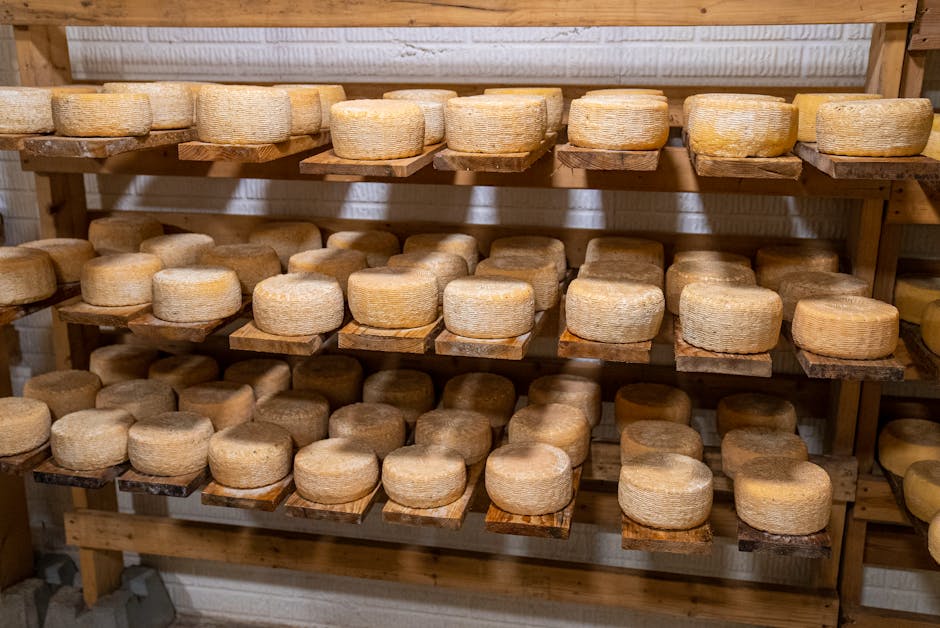Nothing can be quite as delicious as a well-aged Gouda. It’s an indulgence that adorns cheese boards, elevates recipes, or simply teases the palate when served alone. This article will satiate your appetizing curiosity by exploring methods to keep your Gouda cheese fresh, identify signs of spoiled Gouda, and offer tips on reviving hard or dried-out cheese, enabling you to navigate the world of this Dutch delight with confidence.
Identifying Fresh Gouda
Being keen to the characteristics of fresh Gouda will come in handy while handpicking from a variety of cheeses. Fresh Gouda is known for its light yellow color, closely paired with a mild, slightly sweet or nutty smell that is pleasing and appetizing. Keep your senses alert and observe these properties while purchasing:
- Examine Gouda’s appearance – it should be a light yellow without any discoloration.
- Sniff the product – Fresh Gouda’s aroma should be mild and pleasant, not pungent or strong.
Proper Storage of Gouda
Proper storage and handling of Gouda make a significant difference in retaining its quality and preventing waste. Cheese, like any dairy product, is perishable, so make sure to care for your cheese:
- Ensure refrigeration: It is paramount to refrigerate your Gouda immediately after purchase to maintain its freshness.
- It’s a wrap! For storage, prefer wax paper or cheese paper over plastic wraps. This allows the cheese to breathe and avoids maintaining excessive moisture, which can accelerate spoilage.
Not adhering to appropriate storage practices can significantly deteriorate Gouda’s quality and subsequently, its safety for consumption. The same way you wouldn’t store ice cream next to onions, you need to protect your Gouda from strong smells:
- Keep Gouda away from the cold drafts of your fridge door and instead, store it in the warmest part of your fridge.
- Aroma absorption: Gouda can absorb the smells of other food items in the fridge. To keep its taste intact, don’t store it close to any strongly scented foods.
Recognizing Spoiled Gouda
While a superbly aged Gouda packs character and piquancy, it’s crucial to identify when it’s past its prime. Looking for signs such as visible mold growth or off-smelling odors can be the initial warning signs of spoilage.
It’s essential to exercise extra caution when it comes to consuming suspicious cheese, as spoiled Gouda can pose significant health risks. While cheese molds can be cut off safely in some types of cheeses, Gouda isn’t one of them:
- Tip the block: Discard the entire block if you suspect any mold or bacteria contamination. Gouda is a soft cheese and such incidents spread throughout the block.
- Be safe than sorry: When in doubt about the quality or safety of the cheese, it’s always the wisest to discard it, as the potential health risks are not worth the gamble.
Different Stages of Aged Gouda
A good aged Gouda is a gourmet’s delight. It can possess a darker color, a strong aroma, and a crystallized texture, which are all signs of a well-matured cheese and not a spoiled one. The tricky part is distinguishing it from a bad, spoiled Gouda:
- Rely on your senses: A spoiled Gouda will have a putrid or sour smell, an off-color, and an unpleasant taste.
Aging does not pose harm, but rather leaves an impact on the flavor and texture of Gouda. It changes the cheese’s quality in such a way that:
- The cheese becomes harder, stronger in flavor, and may develop crunchy, salty crystals known as ‘cheese diamonds’. These are a sign of good quality aged Gouda.
Reviving Hard, Dried-Out Gouda
Before you think of disposing of a hard and dried-out Gouda, there might still be a saving grace for it. Here’re a few tricks to restore it to more edible conditions:
- Use moisture: Wrap the cheese in a damp cloth and store it in the refrigerator. The moisture from the cloth will be absorbed by the cheese, softening it to some extent.
- Get creative in the kitchen: Dried-out Gouda may still work perfectly for cheese sauce or fondue. The heat and additional liquids can aid in rehydrating the cheese, bringing back some of its lost glory.
Reviving Gouda could save a block from turning into waste. However, there is a trade-off to understand:
- While a revived Gouda can regain some softness and flavor, but it may not taste or feel exactly the same as fresh Gouda, or even a well-aged one. It may be beneficial in some recipes, but not ideal for raw consumption.
In a nutshell, although Gouda cheese has its complexities, a few key tips and techniques will help you make the most of its delightful flavors and avoid those pesky pitfalls. Proper storage, careful observation, and safe handling are your tools to savor this cheesy goodness in its best form. Enjoy your Gouda and enrich those palatable experiences.
Key Takeaway:
- Fresh Gouda has a light yellow color and a mild, sweet, or nutty smell. Any discoloration or pungent smell should raise concerns of spoilage.
- Proper storage is crucial to preserving Gouda’s freshness. It should be refrigerated immediately and wrapped in wax or cheese paper.
- Visible mold growth and off-smelling odors are signs of spoilage in Gouda. If these signs are present, it’s safer to discard the entire block.
- It is not uncommon for aged Gouda to darken, develop a strong smell and a crystallized texture, which should not be mistaken for spoilage.
- Hard or dried Gouda could be revived by wrapping in a damp cloth or incorporating into a cheese sauce or fondue.
Knowing how to keep your Gouda fresh, how to distinguish fresh from spoiled, and how to revive a dried-out block will no doubt elevate your cheese experiences. Don’t let the intricacies of cheese care intimidate you, but let them guide you for a more enjoyable Gouda indulgence.
FAQs
Q: Is it safe to eat the rind of Gouda cheese?
A: While it is safe to eat the rind of Gouda cheese, some people may prefer to remove it due to its texture and taste.
Q: Can Gouda cheese be frozen for long-term storage?
A: Freezing Gouda can affect its texture and flavor. It is best to consume it fresh, but if you must freeze it, use it in cooked dishes after thawing.
Q: How long can Gouda cheese stay fresh outside the refrigerator?
A: Gouda should be refrigerated as soon as possible. However, it can typically stay fresh for a few hours out of the fridge.
Q: If the Gouda cheese has a strong smell, is it bad?
A: Not necessarily. Aged Gouda can develop a robust aroma that should not be mistaken for spoilage. However, a sour or putrid smell indicates the cheese has spoiled.
Q: What types of dishes are best for using revived, dried-out Gouda?
A: Revived Gouda works well in recipes like cheese sauces, fondues, or any dish where it will be melted and mixed with other ingredients.
Remember to share this article with fellow cheese lovers, and explore more posts on our website for more insights into your favorite foods.






